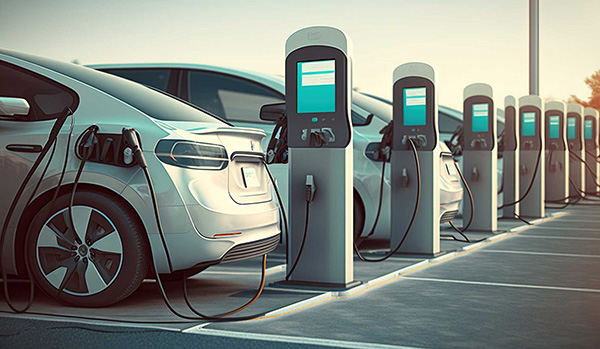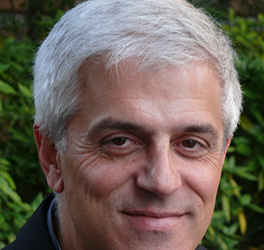Volume 27 | Issue 2
Click here to read the complete illustrated article or continue below to read the text article.
According to the Pew Research Center, there are 61,000 EV charging stations in the United States today. By 2030, the Biden Administration has set a goal of 500,000 charging stations across the country. When you do the math and check the calendar, you might be asking yourself, how do we close such a large gap?
The National Electrical Manufacturers Association (NEMA) is the largest trade association of electrical manufacturers in the nation, representing one percent of GDP, more than 300 companies, and half a million American workers across all 50 states. Our members include manufacturers of EV charger stations and the electrical infrastructure necessary to build them.
Electric vehicle charging infrastructure is not just a piece of equipment. Rather, it represents a combination of hardware, software, cables and cable management, and analytics integrated into a network that delivers energy safely, reliably, and efficiently to a vehicle.
Infrastructure includes additional critical site elements encompassing lighting, controls, and other communication devices that enable the safe use of the charging equipment and enhance the security while optimizing overall energy efficiency and minimizing carbon impact.
Our commitment to electrifying our nation’s transportation systems stems from the multitude of benefits this transformation will bring to our economy and to our climate goals.
We’re approaching three years since the signing of the Infrastructure Investment and Jobs Act (IIJA). Both the IIJA and The Inflation Reduction Act (IRA) are sending billions of dollars in federal funding to states to modernize and electrify our nation’s infrastructure and transportation. Like any major rollout, reaching the stage where these goals materialize will take time and we are speeding up.
To buffer this funding from the federal government, our members have already invested $12 billion to date in dozens of manufacturing facilities around the country to foster and strengthen domestic manufacturing and supply chain capabilities for EV charging equipment.
Recently, NEMA had the opportunity to lead a panel discussion at the IEEE meeting in Minneapolis to see how this funding is moving into states. We heard directly from Minnesota DOT officials on the status of their NEVI funding program and the crucial role that the state’s primary utility Xcel Energy will have in the successful deployment of, an operational EV charging station. The National Electric Vehicle Infrastructure (NEVI) program is rolling out in earnest and we expect to see more states making awards and releasing solicitations in the coming months.

As we approach the halfway point of 2024, it’s important to look at issues like workforce development and the policy side of electrified transportation can unlock to accelerate this transition.
Fundamental to achieving this future electrified transportation ecosystem NEMA has recently put forth following recommendations.
This deployment should strive towards standardization and interoperability and allow for enhanced communication and coordination between the vehicle, the charging station, and the grid to maximize the benefit and convenience for vehicle owners while not overly stressing the grid. This approach will create a more stable environment for innovation, accelerate infrastructure rollout, and lead to faster consumer adoption.
Publicly funded charging locations should be interoperable with all electric vehicles. For a charging system to energize a vehicle’s battery, there must be a common physical connection point and “handshake” between the vehicle’s battery management system (BMS) and the charger. The BMS will need to communicate important parameters of the battery to the charger, such as state of charge, power capability, environmental conditions, and other data that are critical to safety, battery longevity, and commercial interoperability. The connection and communication between a vehicle and charger should be based on a common protocol and a language fluency that creates a seamless charging experience for all vehicles and all users.
There’s work to do, no doubt about it. Our team and our members understand this is a marathon, not a sprint. We know that when we cross the finish line, our electrified transportation system will deliver economic, climate and social benefits for generations to come.

About the Author:
Steve Griffith, PMP, Executive Director, Regulatory & Industry Affairs, Mobility, National Electrical Manufacturers Association (NEMA) Steve Griffith currently serves as Executive Director Regulatory & Industry Affairs, Mobility and the association’s overall cybersecurity activities. He brings more than two decades of experience in IoT, cybersecurity, electrified and intelligent transportation systems. Prior to joining NEMA he managed projects for the Department of Defense and the Transportation Security Administration.
Scott Ellyson, CEO of East West Manufacturing, brings decades of global manufacturing and supply chain leadership to the conversation. In this episode, he shares practical insights on scaling operations, navigating complexity, and building resilient manufacturing networks in an increasingly connected world.